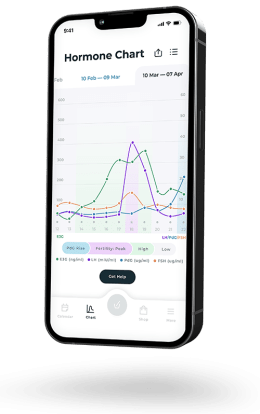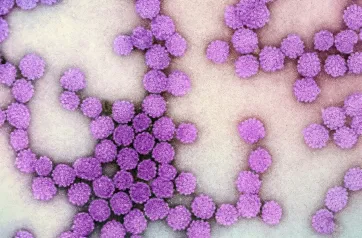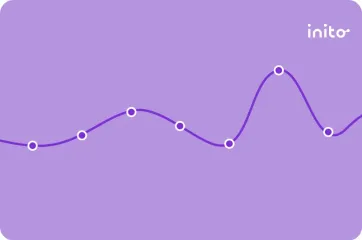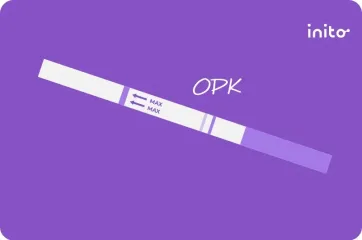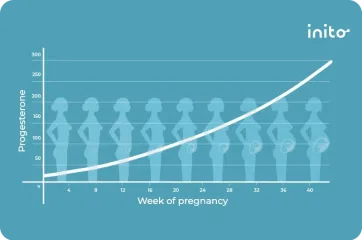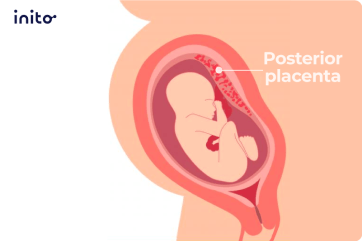Content table
On the hunt for more insight into your 9 DPO symptoms—or lack of symptoms?
Some women may begin noticing early signs of pregnancy at this stage. But many will not. And both of these scenarios are completely normal. In one study, 84% of the pregnancies began between 8 DPO and 10 DPO.
So at 9 DPO, you could already be pregnant or pregnancy is just around the corner. Want to know even more about what you should be feeling at 9 DPO though? Keep reading for an in-depth look at what to expect at 9 days past ovulation.
Key takeaways
- For most pregnancies, implantation occurs between 8 – 10 days past ovulation. But the full window for implantation is day 6 – 12 post ovulation.
- hCG levels will begin doubling soon after successful implantation.
- 9 DPO symptoms can easily be confused with premenstrual symptoms. Fatigue, mood swings, bloating, stomach issues, and tender breasts are common early pregnancy symptoms. But they could also be from PMS.
- One sign that could point to pregnancy is implantation bleeding. This would appear as very light bleeding or spotting a few days before your period is supposed to arrive.
- Not noticing any symptoms at 9 DPO doesn’t mean that you’re not pregnant. In fact, many pregnant women won’t notice signs quite this early.
- Tracking symptoms you notice with the Inito app is a helpful way to spot anything unusual that may indicate pregnancy.
- For most women, 9 days past ovulation is too early for a pregnancy test to detect hCG. Even if the embryo has already implanted, your hCG levels may not be high enough to be detected yet.
- If you test negative at 9 days past ovulation, wait another week or until after your missed period. Then you can take a pregnancy test again for a more accurate result.
What is 9 DPO and how to calculate it?
9 DPO refers to the ninth day after ovulation has occurred. And it’s a busy time for your body. Before we discuss everything that goes on in your body at 9 DPO, let’s make sure you know how many DPOs you have.
How do you know how many DPO you are?
Not 100% sure if you’re actually at exactly 9 DPO? No worries.
Here’s how to calculate what DPO you are:
- Ovulation is expected to occur 24-36 hours after your LH surge. The day you ovulate is considered Day 0.
- After you ovulate, each day is considered an additional day past ovulation. So the first day after you ovulate, you’ll be at 1 DPO. The second day after, you’re 2 DPO, and so on.
- Inito’s fertility monitor can help you track and confirm ovulation.. Inito measures four fertility hormones – LH, estrogen, PdG (a urine metabolite of progesterone), and FSH on a single test strip. It gives you easy-to-read charts that show you when you ovulated as well as how many DPO you are. This helps eliminate the guesswork you may have to do with other tracking methods.
Now that you know how to calculate how many DPO you are, let’s examine what’s going on in your body at 9 DPO.
What happens at 9 DPO if pregnant?
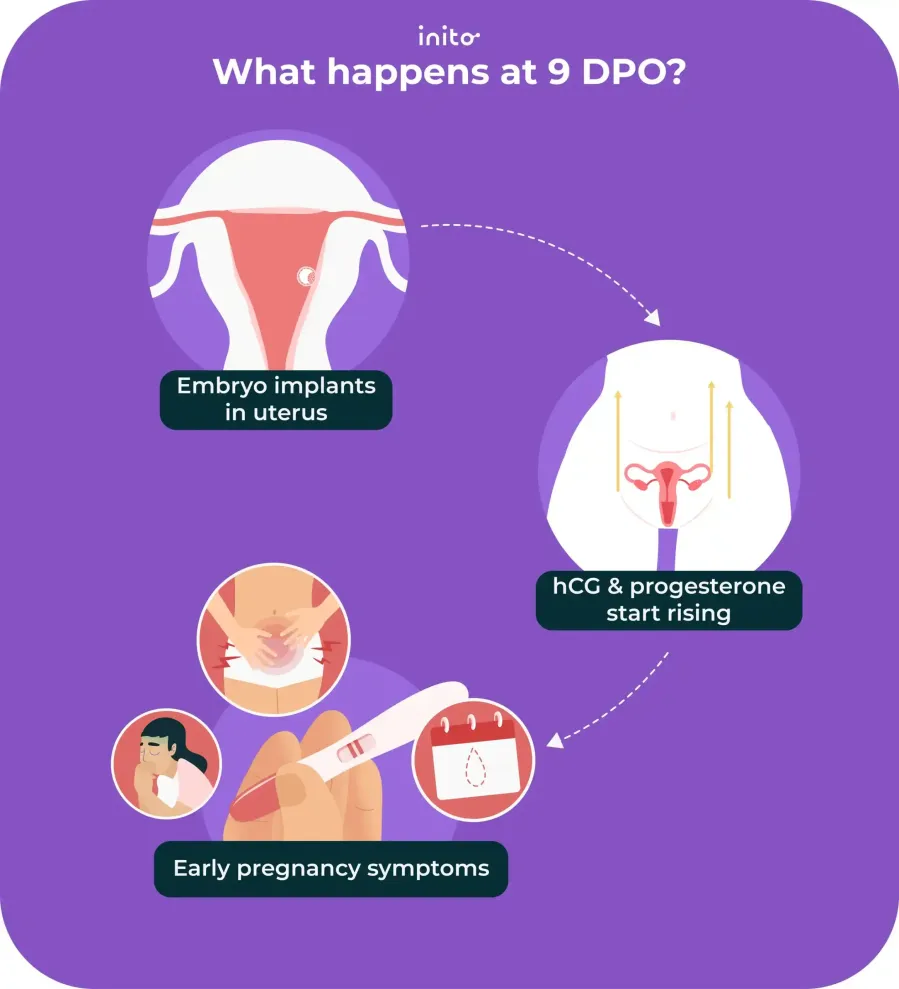
At 9 DPO, you could already be pregnant. And if you’re not yet, you could become officially pregnant any day now.
Let’s talk about exactly what’s happening at 9 DPO:
Implantation
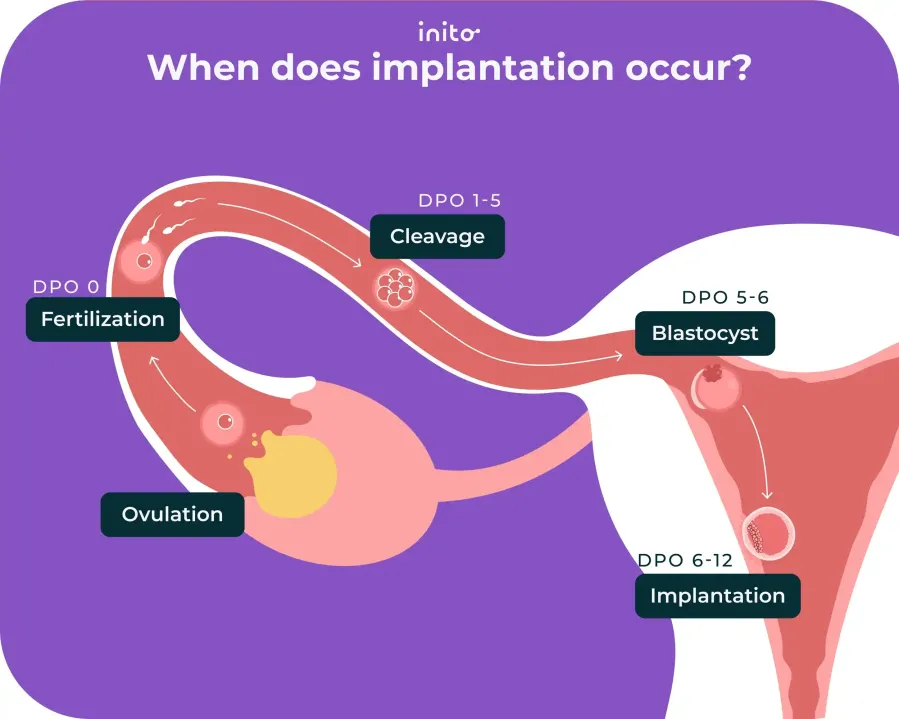
If fertilization has occurred, the embryo will implant into your uterine lining anywhere from 6 DPO to 12 DPO. This is when the fertilized egg connects to your maternal blood supply and you officially become pregnant!
The window for implantation is technically a week long. But the most common days for the embryo to implant are 8 DPO, 9 DPO, and 10 DPO.
hCG starts rising
Once the embryo successfully nestles into its new home (your uterus), your body will begin pumping out higher and higher amounts of hCG. The exact levels of this pregnancy hormone are small at first. But human chorionic gonadotropin will just about double every 48 hours.
But keep this in mind!
One study found that the median hCG levels at 9 DPO were 4.04 mIU/mL. This is far below the amount (20 mIU/mL) that most home pregnancy tests are able to detect. Simply put, if you test at 9 DPO, you could get a negative pregnancy test but actually be pregnant.
Progesterone continues rising
Your levels of the hormone progesterone will keep increasing too. This hormone has actually already been on the rise since you ovulated. But after pregnancy officially begins with implantation, progesterone rises even more. This helpful hormone ensures the pregnancy stays healthy.
When your progesterone levels are heightened, you may experience premenstrual-like symptoms. This is why it’s often challenging to tell PMS from pregnancy symptoms. But everyone’s body reacts differently to this hormone. So it’s possible you may not notice any out-of-the-ordinary symptoms.
Know your chances of Ovulation!
Take our ovulation quiz to understand how your hormone patterns and
lifestyle factors may affect your chances of ovulating

Common 9 DPO symptoms
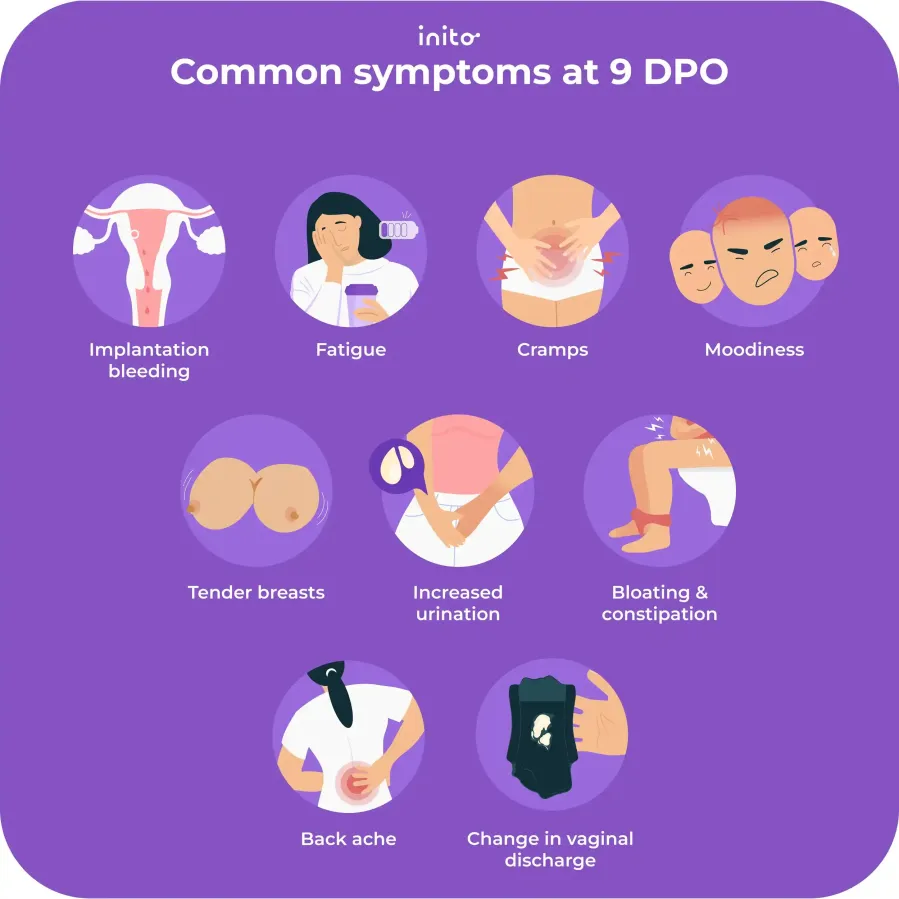
How do you know if your period is coming or if you’re pregnant 9 days after ovulation?
Let’s take a look at the possible 9 DPO symptoms you may experience and what they’re telling you:
Symptom(s) I’m experiencing… | This symptom is caused by… | Early pregnancy sign or just PMS | Can I actually trust this symptom? |
Implantation bleeding (This looks like very light bleeding or spotting) | Blood vessels burst when the embryo officially connects to the mother’s blood supply. | Pregnancy sign | If you have this symptom, it could definitely indicate pregnancy. But realize that only 15-25% of pregnant women will have implantation bleeding. |
Fatigue | Rising progesterone levels | Could be either | Fatigue that’s much more extreme than usual could point to pregnancy. |
Cramping in your abdominal area | Either implantation or increased abdominal contractions from rising levels of progesterone. | Could be either | Cramping caused by the embryo implanting is short-lived (1 – 2 days). It will feel like a dull ache that’s less painful than period cramps around days 8 – 10 past ovulation. |
Mood changes | Increasing pregnancy hormones (progesterone and hCG) | Could be either | More intense mood swings may indicate early pregnancy. |
Breast tenderness | Increase blood flow to the breast area due to increasing progesterone. | Could be either | Tenderness that is more obvious than normal could mean pregnancy. |
Increased urination | Having more frequent bladder contractions due to higher progesterone levels. | Could be either | If the amount of trips to the bathroom seems more noticeable than usual, it could be from early pregnancy. |
Bloating and constipation | Your digestive processes slow down when you have more progesterone in your system. | Could be either | This symptom is not all that reliable from telling PMS from early pregnancy. |
Achy back | Increased laxity in your back muscles as progesterone rises | Could be either | Backache is not a reliable pregnancy symptom on its own. |
Changes in vaginal discharge | Decreased amounts of estrogen (before your period) or changes to the vaginal wall (from pregnancy) | Could be either | This symptom’s reliability depends on each woman and what’s normal for them. |
Let’s examine each symptom even more carefully so you know exactly what to expect at 9 DPO:
Implantation bleeding
Implantation bleeding looks like spotting or light bleeding a few days before your expected period. It’s much lighter and short-lived than a period. You can tell it by seeing a small amount of pinkish or brownish blood on your underwear or toilet paper.
Fatigue
Keeping a log of your normal energy levels throughout your menstrual cycle can help you make better assumptions based on this symptom. However, feeling extremely low energy could mean that you’re pregnant. General tiredness is common just before your period, though. Knowing your baseline will help you tell the difference.
Cramping / Tummy ache
Feeling crampy and achy in your stomach area is common at 9 DPO. Implantation can cause cramping due to the embryo connecting to your uterine lining. More progesterone flowing through your body can also make your abdominal area contract. And this tightness can cause discomfort.
Moodiness
Increasing hormone levels (progesterone and hCG) can cause irritability or other mood shifts.
Breast tenderness
Extra blood flows to your breasts when you have higher levels of progesterone. This can happen just before your period or in early pregnancy. If the fullness and tenderness are much more intense, it’s possible that you’re pregnant. Tracking this symptom each cycle can help you establish a baseline.
Increased urination
Going to the bathroom a ton at 9 DPO? Your bladder will contract more when you have more progesterone in your system. And this causes the sensation of needing to pee more often.
Bloating and constipation
Heightened progesterone levels slow down digestion. When digestion is prolonged, you may feel extra gassy or have trouble going to the bathroom.
Backache
Feeling a dull ache or pain in your lower back is a not-so-fun 9 DPO symptom. This achiness happens when your ligaments relax from too much progesterone.
Vaginal discharge changes
Two changes in vaginal discharge are possible. The first is a thicker, stickier cervical mucus (CM). This happens when estrogen decreases before the onset of your period. The second possibility is increased amounts of whitish CM. This would be caused by an altered vaginal wall in early pregnancy.
Yes, that is quite a lot of symptoms to keep tabs on. But believe it or not, you could experience even more symptoms like:
- Increased appetite
- Heat flashes
- Indigestion
- Heartburn
- Heightened smell
- Dizziness
In case you’re wondering, how on earth do I keep track of all of this? Here’s our best advice…
Tracking your 9 DPO symptoms
To better spot any unusual symptoms, consider keeping a log or using a fertility tracking app. The Inito app (which is free!) lets you track over 40 symptoms including vaginal discharge, abdominal pain, and your mood on the day, each menstrual cycle. You can also use it with the Inito fertility monitor to get accurate data about when you ovulate and what DPO you’re at.
![]()
Tracking your ovulation, DPO, and symptoms is helpful when you’re in the two-week wait. Don’t worry if you’re already at 9 DPO and have not seen any symptoms yet. More on this next!
What if I don’t have any symptoms at 9 DPO?
Not seeing pregnancy symptoms at 9 DPO is completely normal. So don’t stress if you’re hoping this is your cycle and nothing seems to be happening yet!
A study tracked 200 women’s experiences with pregnancy symptoms. And below is what they discovered:
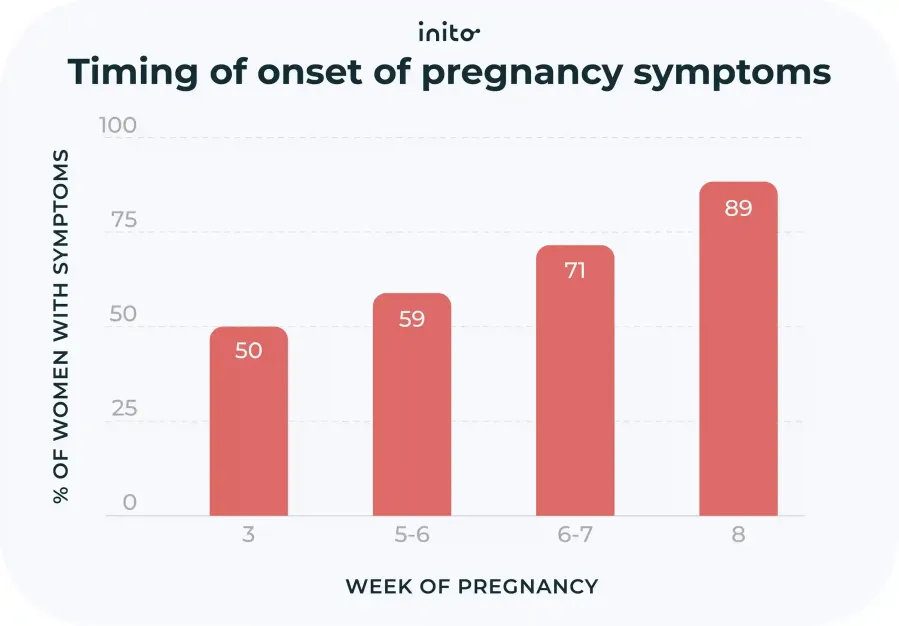
# of weeks pregnant | % of women who had early pregnancy symptoms |
About 3 weeks (20 DPO) | 50% |
5 – 6 weeks | 59% |
End of 6 weeks | 71% |
8 weeks | 89% |
Why does this data matter? Many women expect to feel different right away when they get pregnant. But in reality, there are many who won’t notice any signs until several weeks into the pregnancy. And these women will still go on to have a live birth.
So don’t count this cycle out just because you haven’t seen any signs by 9 DPO. There’s still a chance you could be pregnant. But you’ll have to confirm by taking a pregnancy test. Now, what are the odds of testing positive at 9 DPO? Let’s explore 9 DPO pregnancy testing scenarios next.
Can you get a positive pregnancy test at 9 DPO?
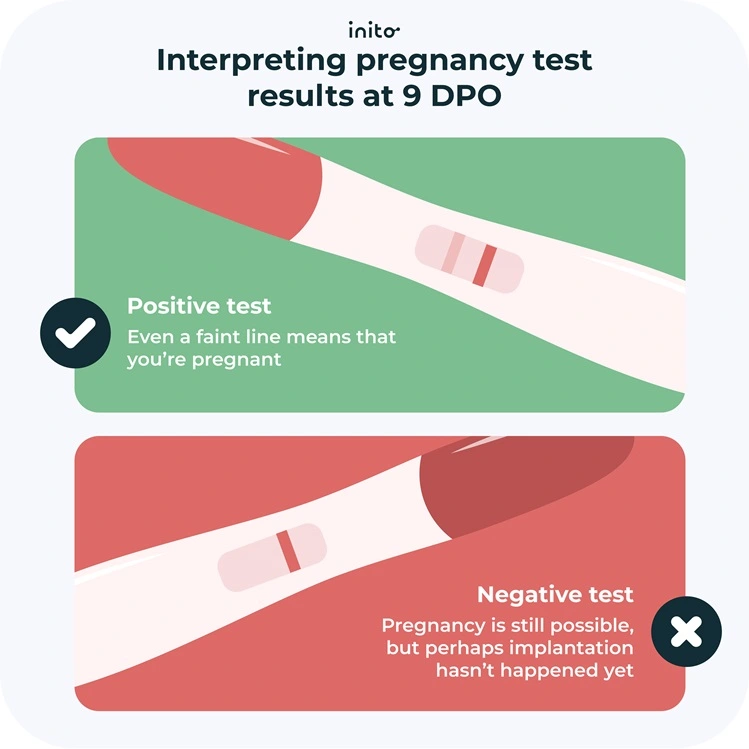
It is possible to get a positive pregnancy test 9 days after ovulation. however, you should know that in many cases, 9 DPO could be too early for a test to detect hCG.
Take a look at the table below for a helpful 9 DPO pregnancy testing action plan.
My 9 DPO pregnancy result is… | That means… | What I should do next… |
Positive | The embryo has successfully attached to your uterine lining, and you’re pregnant! Your hCG levels are greater than 20 mIU/mL. The line may be faint, but a positive is a positive. | Retest again after the date of your missed menstrual period. The line should be slightly darker as your hCG levels keep rising. |
Negative | Pregnancy is still possible, but perhaps implantation hasn’t happened yet. Or if it did, your hCG levels are less than 20 mIU/mL and won’t register on home pregnancy tests. | Remain patient, and take another pregnancy test closer to 12 – 14 DPO (around the time of your missed period). This will give you a more accurate result. |
You’ll notice in the chart that a negative test at 9 DPO could be a false negative. That’s because, after implantation, it takes time for your hCG levels to reach a detectable level.
So if you do take an early pregnancy test at 9 DPO, it’s a good idea to retest again up to a week after your expected period is missed.
Getting a negative test may feel frustrating. And understandably so. But keep reading the next section for more about what this means.
Negative pregnancy test at 9 DPO?
Remember back to the timeline for implantation: 6 – 12 days post ovulation. Even though the embryo typically implants between 8 – 10 DPO, up to 12 DPO is possible. So if you tested negative, try not to throw in the towel just yet. Implantation may be just around the corner.
Another thing to keep in mind is how human chorionic gonadotropin rises. Once the embryo implants, hCG levels will begin doubling nearly every 48 hours. But hCG levels start out in a minuscule amount. So if you test too close to when implantation occurred, your pregnancy test may not detect hCG yet.
Read more: hCG Doubling in Pregnancy
Why do I feel like I’m getting my period at 9 DPO?
Many symptoms of early pregnancy resemble those of PMS. This is because the main culprit behind a lot of these symptoms is rising progesterone levels. And since your progesterone begins increasing after ovulation, you may experience symptoms even before pregnancy officially begins.
That’s why—as hard as it may be—it’s best to not read too far into your symptoms this early on. Only a pregnancy test will be able to confirm whether or not you’re actually pregnant or not.
Was this article helpful?
- Time of Implantation of the Conceptus and Loss of Pregnancy – New England Journal of Medicine
- Strips of Hope – National Library of Medicine
- A Prospective Study of the Onset of Symptoms of Pregnancy – Journal of Clinical Epidemiology
- Relationship Between the Menstrual Cycle and Timing of Ovulation Revealed by New Protocols: Analysis of Data from a Self-Tracking Health App – PMC








